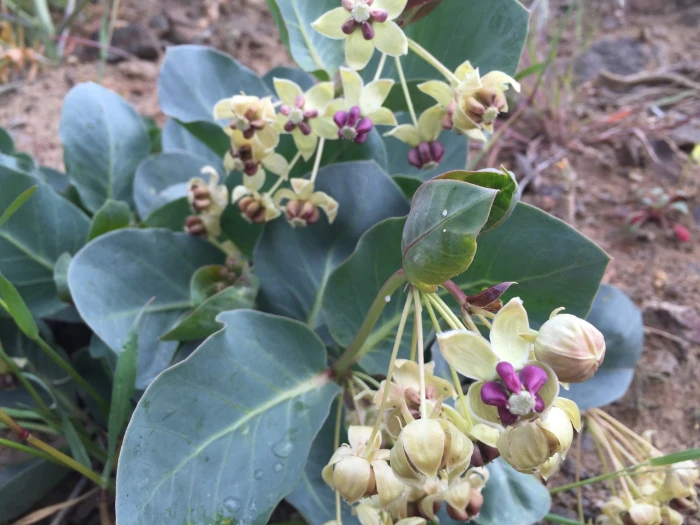Pallid Milkweed
(Asclepias cryptoceras)
Pallid Milkweed (Asclepias cryptoceras)
/
/

Brad Grimm
CC BY 4.0
Image By:
Brad Grimm
Recorded By:
Copyright:
CC BY 4.0
Copyright Notice:
Photo by: Brad Grimm | License Type: CC BY 4.0 | License URL: http://creativecommons.org/licenses/by/4.0/ | Rights Holder: Brad Grimm | Publisher: iNaturalist | Date Created: 2016-05-05T16:57:18Z |

























Estimated Native Range
Climate Requirements for Granada, Spain
| This Plant | Your Site | Plant Suitability for Your Location | ||
|---|---|---|---|---|
| • Precipitation | 7" - 51" | 16" | Your precipitation may be too high for this plant. | Too high |
| • High Temp. | 66°F - 99°F | 94°F | Your summer temperatures are normal for this plant. | Excellent |
| • Low Temp. | -0°F - 64°F | 36°F | Your winter temperatures are normal for this plant | Excellent |
This plant may not grow well at your location - your precipitation is too high.
Summary
Asclepias cryptoceras, commonly known as pallid milkweed, is a perennial herb native to the arid and semi-arid regions of the Great Basin in western North America, particularly thriving in sagebrush steppe and desert scrub habitats. It typically grows to a height of 1 to 2 feet (0.3 to 0.6 meters) with a similar spread. The plant is characterized by its thick, heart-shaped leaves and clusters of small, intricate flowers that bloom from late spring to early summer. The flowers exhibit a unique structure with bright to dull pink hoods and pale reflexed corollas, which are particularly attractive to a variety of pollinators, including bees and butterflies.
Pallid milkweed is valued for its drought tolerance and ability to thrive in poor, well-drained soils, making it a suitable choice for xeriscaping and naturalized areas. It is also used in pollinator gardens due to its role as a host plant for monarch butterflies. While it is not commonly used for ornamental purposes, its ecological importance and ease of maintenance make it a beneficial addition to restoration projects and wildlife habitats. Gardeners should note that, like other milkweeds, it contains toxic compounds that can be harmful if ingested.CC BY-SA 4.0
Pallid milkweed is valued for its drought tolerance and ability to thrive in poor, well-drained soils, making it a suitable choice for xeriscaping and naturalized areas. It is also used in pollinator gardens due to its role as a host plant for monarch butterflies. While it is not commonly used for ornamental purposes, its ecological importance and ease of maintenance make it a beneficial addition to restoration projects and wildlife habitats. Gardeners should note that, like other milkweeds, it contains toxic compounds that can be harmful if ingested.CC BY-SA 4.0
Plant Description
- Plant Type: Herb
- Height: 0.5-1.5 feet
- Width: 0.5-1.5 feet
- Growth Rate: Moderate
- Flower Color: Green, Purple, Yellow
- Flowering Season: Spring, Summer
- Leaf Retention: Deciduous
Growth Requirements
- Sun: Full Sun
- Water: Low
- Drainage: Fast
Common Uses
Butterfly Garden, Drought Tolerant, Low Maintenance
Natural Habitat
Sagebrush steppe and desert scrub
Other Names
Common Names: Pallid Milkweed, Humboldt Milkweed, Cow Cabbage, Poker Milkweed
Scientific Names: Asclepias cryptoceras, Asclepias cryptoceras var. cryptoceras, Asclepias cryptoceras var. davisiae, Asclepias davisiae
GBIF Accepted Name: Asclepias cryptoceras